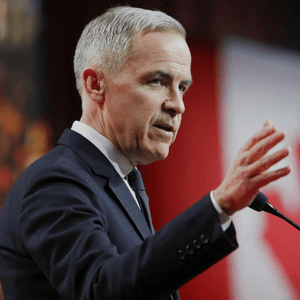
Today, INNOVATIVE released a new seat model that shows that while Liberals still hold an advantage in seats, they are losing ground to the NDP. While the same analysis earlier this year showed the Liberals breaking into CPC and NDP strongholds, the latest polls show the pattern seen in 2015 and 2019 re-asserting itself.
In Canada, we count seats, not votes. And in the last two election the Liberals have had a more “efficient” distribution of votes than the CPC. The CPC have piled up big leads in a relatively small number of seats. The Liberals have been winning a larger number of seats with smaller lead.
While a number of models look at regional trends, campaign managers tend to focus more on grouping seats by patterns in party competitiveness – safe seats, swing seats, no hope seats.
INNOVATIVE’s seat model groups seats into 12 clusters based on the patterns of party competition in the 2019, 2015 and 2011 elections. The analysis separates out “strong” seats (won consistently by >10%), while further distinctions are made by specific criteria for each party and based on geography. We then combined our four latest polls from August and September with 6,009 respondents to see how the race is developing in each of these riding clusters. The sample is weighted to 4,800 to ensure the overall sample’s composition reflects that of the actual population based on the latest Statistics Canada Census data. The detailed methodology and results can be found in our full report.
The big story from our last seat-cluster report (13/9/21) was that the Liberals were gaining ground disproportionately in seats that have been fairly safe for the CPC and NDP. It seemed like both parties were going to be on the defensive, vying not just for traditional swing ridings but also protecting previously “safe” seats.
Model
At a glance, the seat modelling shows that the realignment seen this spring has faded.
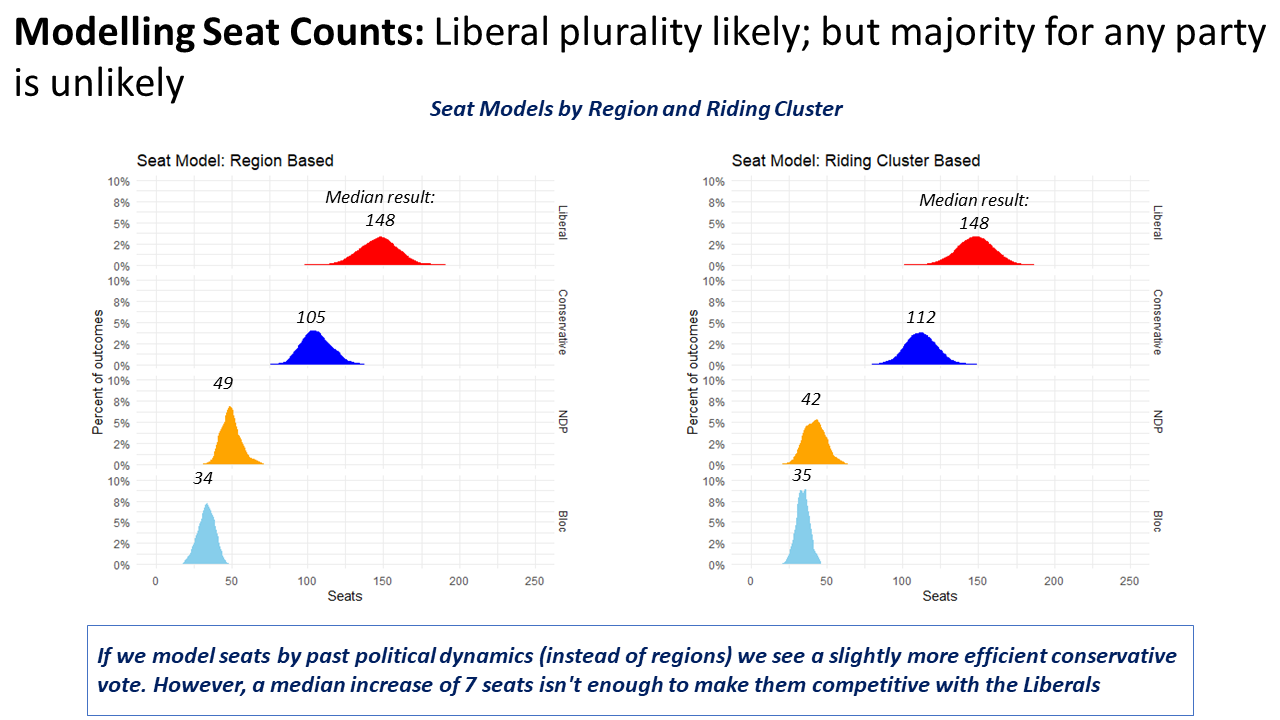
The CPC have regained the advantage in their core seats. A key factor in the rebound is likely the strong backlash among CPC voters against the government’s handling of Afghanistan as well as backlash against the election call.
The NDP has seen significant gains, over 40 seats in either model. While they are struggling in some of their recent swing seats, they’re also picking up some seats that were previously thought be long shots.
Findings
Spotlight: CPC
The CPC are still strong in their core Prairie seats and are back above the Liberals in the traditionally strong CPC seats outside the Prairies.
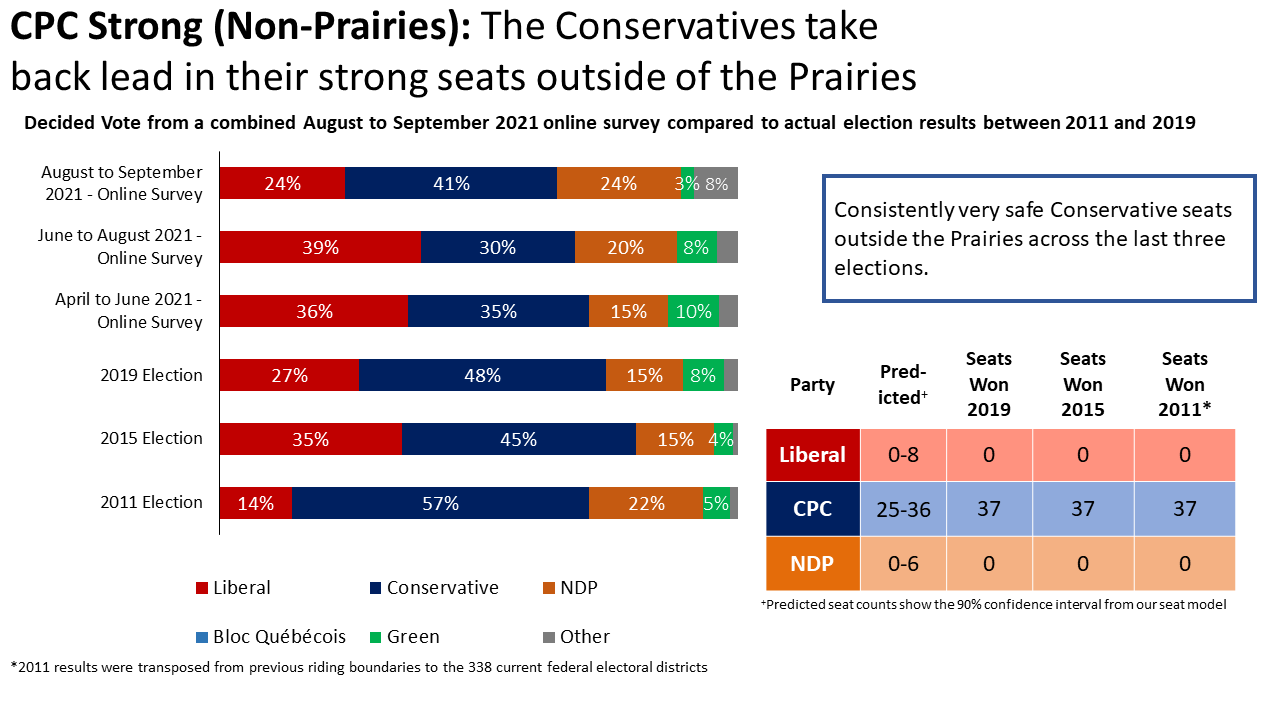
Spotlight: LPC
The LPC has a slight lead in Ontario’s Liberal-Conservative swing seats, but their support has dropped from 48% in our last seat-cluster to just 35% now, still 5 points above the CPC. In the LPC-CPC swing seats outside Ontario, the Liberals are clinging to a 3-point advantage (33%) over the CPC (30%), with the NDP in a close third place (26%). The good news for the Liberals (41%) is that they still maintain a 10-point lead in the seats they won back from Conservatives (31%) after 2011.
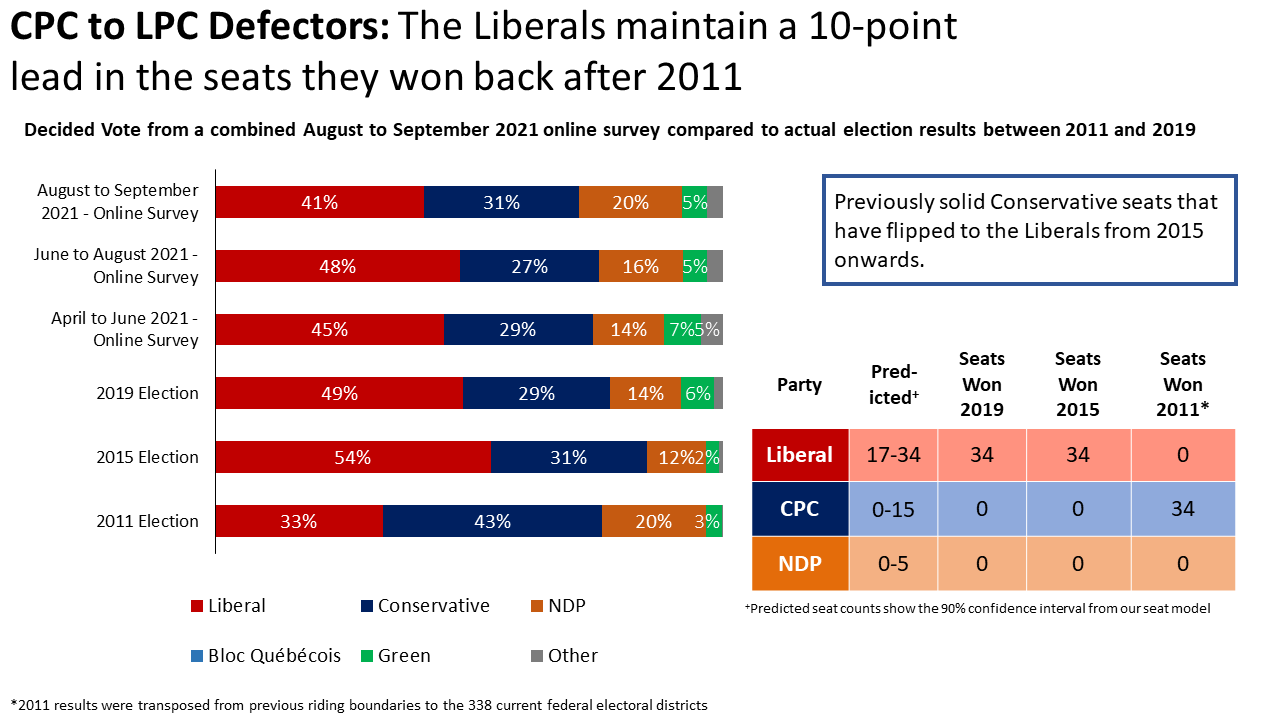
Spotlight: NDP
The NDP (31%) now lead Liberals (27%) and Conservatives (21%) in consistently safe NDP seats after trailing between April and early August. In NDP swing seats, Liberals (35%) still have a narrow lead over the NDP (30%) and CPC (27%). Seats that were formerly part of the “Orange Crush” in QC are now either BQ-LPC or BQ-CPC swing ridings.
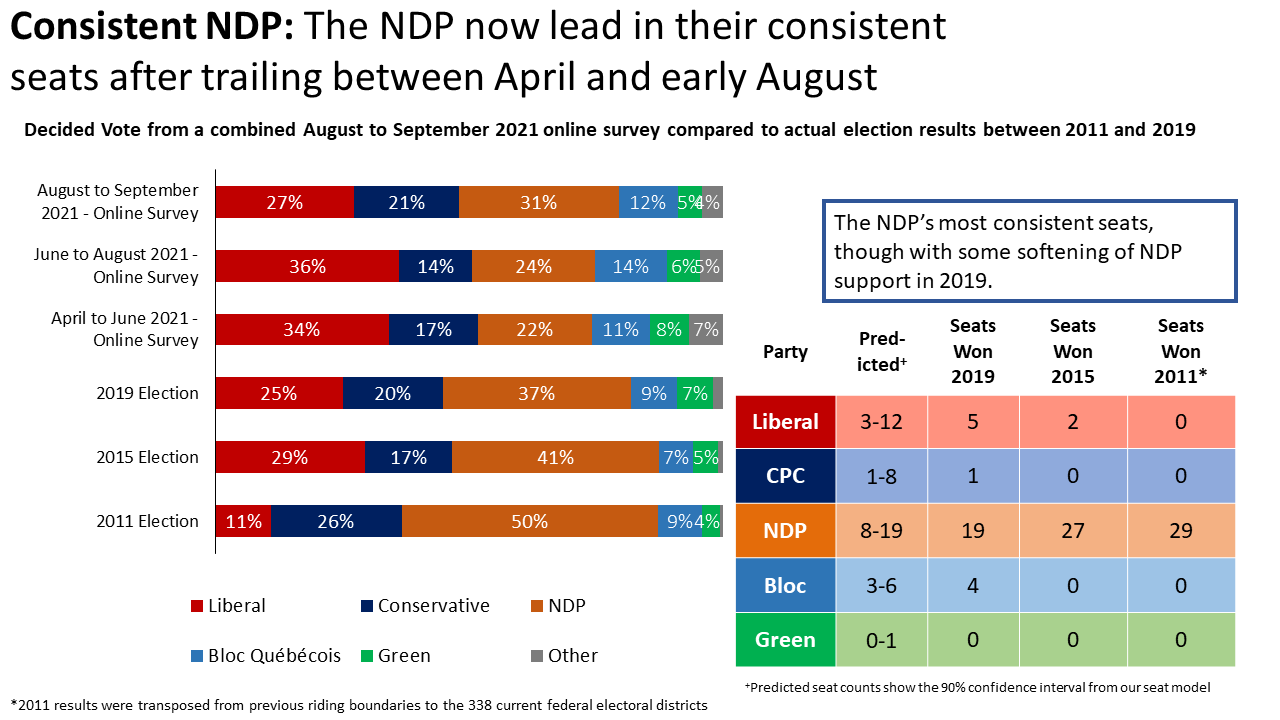
Summary
As the campaigns enter the final stretch, the Liberals’ three-front battle has yielded a narrow win over the CPC, a stalemate with the Bloc, and losses against the NDP.



